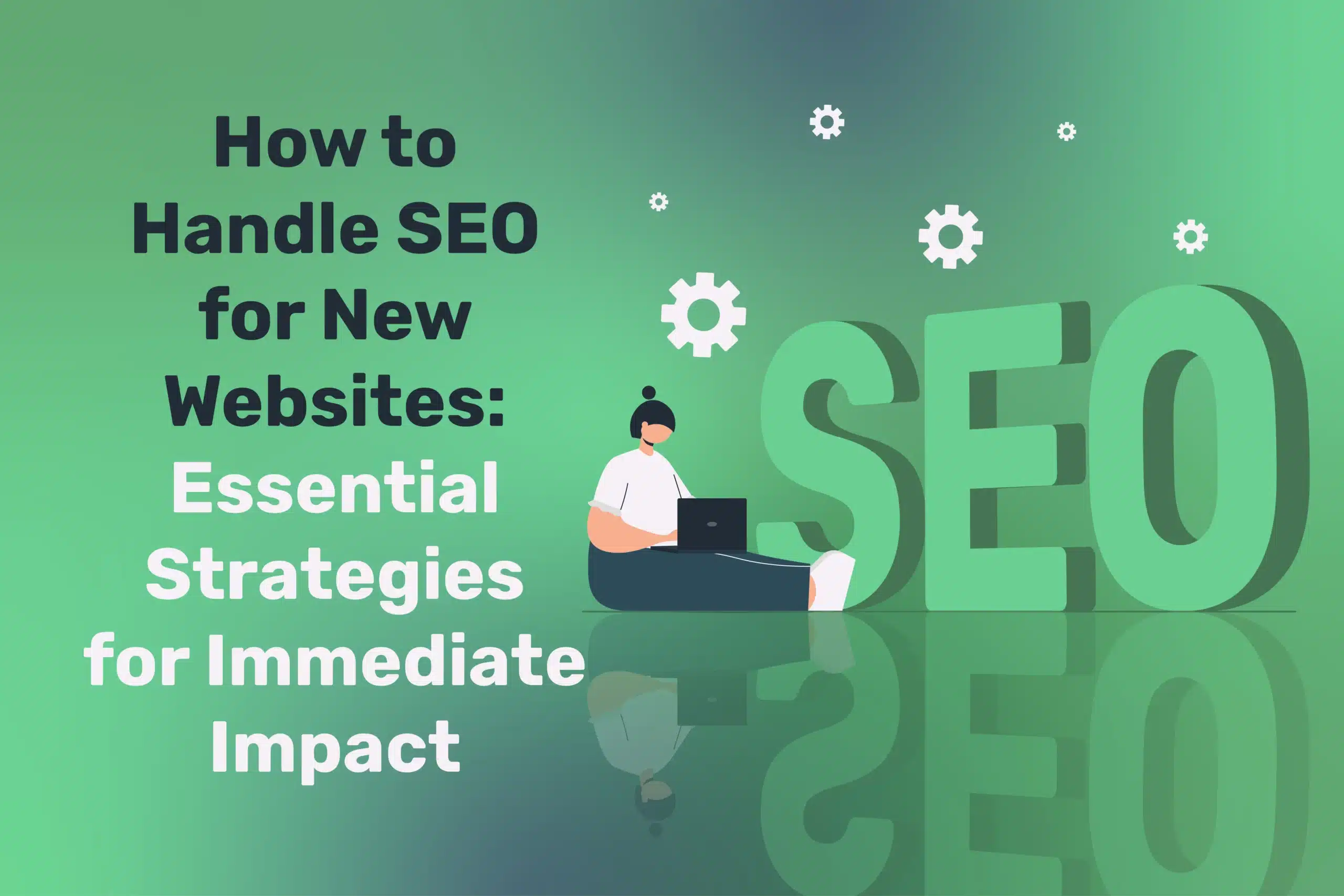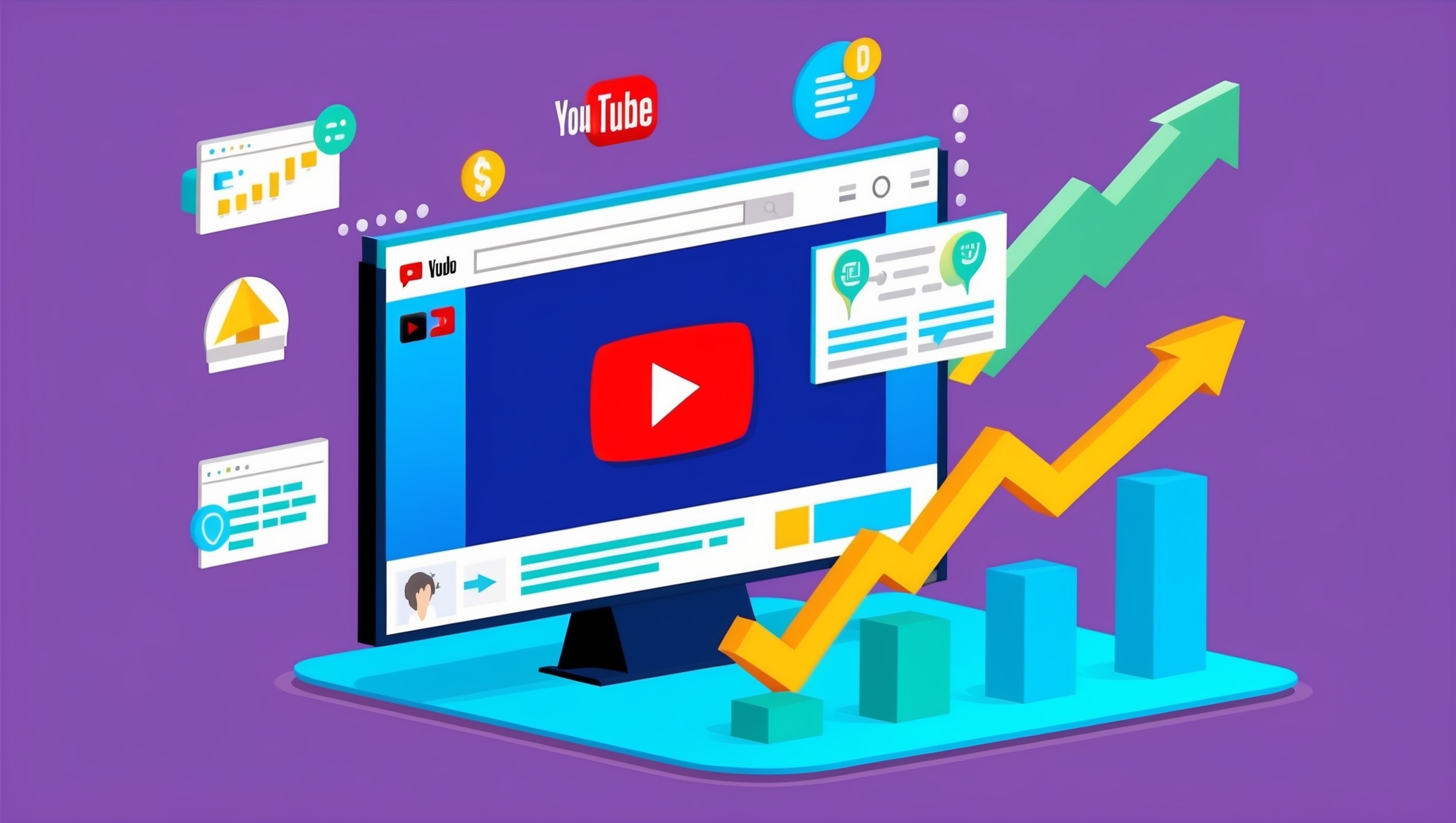
YouTube and SEO: Ranking Videos for Maximum Visibility
Table of Contents
YouTube stands as the second-largest search engine globally, processing billions of search queries and video views daily. Despite this enormous opportunity, many brands and content creators overlook crucial YouTube SEO strategies—from title optimisation and description formatting to systematic keyword research—often assuming the process is overly technical or complex. In reality, implementing proper metadata, cultivating strong engagement signals, and structuring content strategically can significantly boost your videos’ visibility in search results and recommendation feeds.
YouTube and SEO, this comprehensive guide explores proven techniques to help your content reach wider audiences, increase watch time, and drive sustainable channel growth.
Understanding the YouTube Ecosystem and Search Algorithm
YouTube’s ecosystem relies on a sophisticated search algorithm that prioritises relevance, engagement, and watch time. Understanding how metadata, user behaviour, and AI-driven recommendations influence visibility is key to optimising content for discovery.
The Scale and Scope of YouTube
YouTube’s position as a content discovery platform is unmatched:
- Massive Global Audience: Over 2.6 billion monthly active users spanning virtually every demographic, geographic region, and interest category
- Diverse Content Ecosystem: More than 500 hours of content uploaded every minute, covering everything from entertainment and education to product reviews and technical tutorials
- Search-Driven Discovery: YouTube processes billions of search queries daily, functioning as a specialised search engine for video content
- Recommendation Engine: The platform’s algorithm serves personalised content recommendations accounting for approximately 70% of all watch time
This vast ecosystem creates both opportunities and challenges for content creators seeking visibility.
Key Algorithmic Factors
YouTube’s algorithm has evolved significantly, prioritising viewer satisfaction and engagement:
- Watch Time and Retention: The total duration viewers spend watching your videos and the percentage of each video they complete
- Engagement Metrics: Likes, comments, shares, and subscriptions generated by your content
- Click-Through Rate (CTR): The percentage of impressions that convert to actual views
- Session Time: How long viewers continue watching YouTube after engaging with your content
- Recency and Upload Frequency: How recently content was published and your consistent publishing patterns
- Topical Relevance: How well your content matches viewer interests and search intent
Understanding these factors provides the foundation for effective YouTube SEO strategy.
The Business Impact of YouTube Visibility
Optimising for YouTube’s search and recommendation systems delivers substantial benefits:
- Audience Development: Build a loyal community of subscribers who regularly engage with your content
- Brand Awareness: Increase visibility among potential customers searching for relevant topics
- Traffic Generation: Drive qualified visitors to your website, landing pages, or e-commerce store
- Lead Generation: Capture interested prospects through strategic calls-to-action
- Monetisation Opportunities: Generate revenue through YouTube’s Partner Program, channel memberships, Super Chats, and merchandise shelf
- Thought Leadership: Establish authority and expertise in your industry or niche
For businesses and creators alike, YouTube SEO represents a significant opportunity to achieve multiple marketing objectives simultaneously.
Comprehensive Keyword Research for YouTube
Effective YouTube keyword research goes beyond basic search terms, focusing on intent, competition, and trending topics. Leveraging tools like YouTube’s autocomplete, analytics, and third-party platforms can help identify high-impact keywords for better visibility.
YouTube Keyword Research vs. Traditional SEO
Keyword research for YouTube differs from traditional SEO in several important ways:
- Intent Variation: YouTube viewers often have different search intents compared to Google searchers (instructional, entertainment, review-focused)
- Conversational Queries: YouTube searches tend to be more conversational and question-based
- Visual Context: Keywords need to consider what can be visually demonstrated or explained
- Trending Topics: YouTube has more rapid topic cycles influenced by current events and trends
Effective YouTube keyword research accounts for these platform-specific characteristics.
Keyword Research Methods and Tools
Several approaches can identify valuable keyword opportunities:
YouTube Native Research:
- Auto-suggest: Type potential keywords into YouTube’s search bar to see suggested completions
- Trending section: Identify trending topics in your category that might offer timely opportunities
- Competitors’ videos: Analyse successful videos in your niche for keyword inspiration
- YouTube Analytics: Identify search terms currently driving traffic to your videos
Dedicated Tools:
- vidIQ or TubeBuddy: Browser extensions providing keyword data and competitive insights
- Google Keyword Planner: Identify broader search trends that may apply to YouTube
- Ahrefs or SEMrush: Advanced tools with YouTube-specific keyword research features
- YouTube Studio: Built-in analytics showing current search traffic sources
Strategic Approach:
- Start with broad topic ideas relevant to your content
- Expand using auto-suggest and related searches
- Analyse search volume and competition using dedicated tools
- Identify long-tail variations with more specific intent
- Categorise keywords by content type and audience segment
Keyword Categorisation and Prioritisation
Organise keywords strategically to develop a comprehensive content plan:
Categorisation Framework:
- Informational keywords: “how to,” “tutorial,” “guide,” “explanation”
- Commercial keywords: “review,” “comparison,” “best,” “vs”
- Navigational keywords: Branded terms or specific product/service names
- Trending keywords: Time-sensitive topics with current interest spikes
Prioritisation Factors:
- Search volume: Estimated number of monthly searches
- Competition level: How many established videos target this keyword
- Relevance to your expertise: Alignment with your content strengths
- Conversion potential: Likelihood of driving desired viewer actions
- Content creation feasibility: Your ability to create compelling content for the topic
Implementation Strategy: Develop a keyword map connecting specific terms to planned video content, ensuring comprehensive coverage of your topic area while maintaining focus on high-potential opportunities.
On-Page Optimisation Elements for YouTube Videos

Optimising YouTube videos involves crafting compelling titles, detailed descriptions, and relevant tags. High-quality thumbnails and well-structured metadata also improve discoverability and engagement.
Title Optimisation Strategies
Video titles serve as the primary relevance signal to YouTube’s algorithm and potential viewers:
Best Practices:
- Position primary keywords near the beginning of the title
- Limit length to 60-70 characters to prevent truncation in search results
- Include specific numbers, years, or qualifiers to increase click-through rates
- Create curiosity or highlight benefits to encourage clicks
- Maintain brand consistency with recurring elements for series content
Formula for Effective Titles:
[Primary Keyword] + [Specific Detail/Number] + [Benefit/Hook] | [Brand Name]
Examples:
- “Home Office Setup: 7 Essential Items Under £100 | ProductivityHub”
- “Excel VLOOKUP Tutorial: Master This Essential Skill in 15 Minutes”
- “Beginner’s Guide to Sourdough Bread: No-Fail Method for Perfect Results”
Testing Approach: Create 3-5 title variations for each video concept, evaluating them against criteria including keyword presence, clarity, and click appeal before finalising.
Description Optimisation
Well-crafted descriptions improve discoverability and provide valuable context:
Structural Elements:
- First 100-150 characters: Include primary keywords and core message (visible without clicking “show more”)
- Video summary: Comprehensive overview incorporating relevant keywords naturally
- Timestamps/chapters: Markers for key sections to improve navigation
- Resources mentioned: Links to products, articles, or tools referenced
- Social media and website links: Connections to your broader online presence
- Call to action: Clear direction for viewer’s next steps
Best Practices:
- Write at least 200-300 words to provide sufficient context and keyword opportunities
- Incorporate primary and secondary keywords naturally throughout the text
- Use natural language rather than keyword stuffing
- Include relevant hashtags (2-3) at the end of the description
- Update older video descriptions to maintain relevance and accuracy
Template Example:
[Compelling hook with primary keyword]
In this video, I’ll show you [brief summary incorporating key terms].
TIMESTAMPS:
00:00 Introduction
01:45 [Section 1 – keyword phrase]
05:30 [Section 2 – keyword phrase]
…
RESOURCES MENTIONED:
– [Resource 1]: [Link]
– [Resource 2]: [Link]
[Additional context and information with natural keyword usage]
CONNECT WITH US:
Website: [URL]
Instagram: [Handle]
Twitter: [Handle]
#[relevanthashtag1] #[relevanthashtag2]
Tag Selection and Implementation
While tags have decreased in importance, they still help YouTube categorise your content:
Tag Selection Strategy:
- Include specific, relevant tags rather than broad, generic terms
- Start with your primary keyword phrase
- Add variations and related terms
- Include category-defining tags
- Consider misspellings of commonly misspelled terms
- Limit to 10-15 truly relevant tags rather than reaching the maximum
Categories to Include:
- Primary keyword and close variations
- Secondary keywords from your research
- Broader category indicators
- Brand-specific tags for your channel
- Content format tags (tutorial, review, etc.)
Implementation Tip: Review tags used by high-ranking videos addressing similar topics, identifying patterns that may inform your own tag strategy while maintaining relevance to your specific content.
Thumbnail Design for Maximum CTR
Thumbnails often determine whether viewers click on your video:
- High contrast and vibrant colours that stand out in search results
- Clear focal point that communicates video content at a glance
- Consistent branding elements for channel recognition
- Text overlay (if used) limited to 3-4 words maximum
- Human faces showing emotion when appropriate
- Composition that works at multiple sizes (mobile and desktop)
Technical Specifications:
- 1280 x 720 pixels (16:9 aspect ratio)
- JPG, GIF, or PNG format under 2MB
- High resolution and sharp imagery
- Text large enough to read on mobile devices
Testing Methodology: Implement A/B testing by creating multiple thumbnail variations and analysing click-through rates through YouTube Analytics to identify the most effective approaches for your audience.
Engagement Optimisation: The Key to YouTube Algorithm Success

Maximising engagement—likes, comments, shares, and watch time—signals YouTube’s algorithm to boost your content. Encouraging interactions through CTAs and community engagement helps sustain visibility.
Maximising Watch Time and Retention
Watch time represents the most critical ranking factor in YouTube’s algorithm:
- Begin with a compelling hook addressing the viewer’s primary need
- Promise and preview specific value early in the video
- Eliminate unnecessary introductions that delay core content
- Structure content in a logical progression with clear transitions
- Create pattern interrupts (visual changes, music shifts, etc.) every 30-60 seconds
- Include occasional callbacks to upcoming sections to maintain interest
- End with a clear resolution and satisfaction of the initial promise
Retention Optimisation Techniques:
- Study audience retention graphs to identify drop-off points
- Address common objections or questions before viewers leave to find answers
- Use visual storytelling to maintain engagement during complex explanations
- Implement a content “hot start” that delivers value in the first 15 seconds
- Create “open loops” that encourage viewers to watch until resolution
- Maintain appropriate pacing for your specific content type and audience
Example Framework:
- Hook: Attention-grabbing opening (10-15 seconds)
- Introduction: Who you are and what the video delivers (20-30 seconds)
- Roadmap: Brief overview of what’s coming (15-20 seconds)
- Main Content: Structured in clear segments with transitions (bulk of video)
- Summary: Recap of key points (30-60 seconds)
- Call to Action: Clear next steps for the viewer (15-30 seconds)
Fostering Active Engagement
Engagement signals help YouTube identify valuable content worth recommending:
Comment Cultivation Strategies:
- Ask specific, thoughtful questions related to your content
- Create “engagement hooks” by soliciting opinions or experiences
- Respond to comments promptly, especially in the first 24 hours after publishing
- Pin particularly insightful or conversation-starting comments
- Address reasonable criticisms or questions constructively
- Create occasional “community response” videos addressing viewer questions
Like and Share Optimisation:
- Include natural reminders to like the video if viewers found it helpful
- Position these reminders after delivering significant value
- Create specifically shareable moments within your content
- Suggest specific sharing contexts (“Send this to someone who needs help with…”)
- Design content with built-in share appeal (surprising information, useful frameworks, emotional impact)
Subscribe Growth Tactics:
- Clearly articulate your channel’s unique value proposition
- Time subscribe requests after delivering significant value
- Create content series that encourage subscription for future instalments
- Reference upcoming content to create anticipation
- Implement consistent publishing schedules that reward subscriber loyalty
Session Time Enhancement
YouTube rewards videos that keep viewers on the platform:
Playlist Strategy:
- Create thematic playlists grouping related content
- Structure playlists in logical progression (beginner to advanced)
- Update playlists regularly with new relevant content
- Feature playlists prominently on your channel page
- End videos with suggestions to continue watching related content
End Screen Optimisation:
- Feature your most relevant or highest-performing related videos
- Include both recent content and “evergreen” popular videos
- Test different end screen layouts and durations
- Create custom end screen segments that directly reference suggested next videos
- Use the subscribe element consistently in the same position
Strategic Internal Referencing:
- Naturally mention related videos within your content when relevant
- Create multi-part series with clear connections between episodes
- Reference previous videos that provide foundational knowledge
- Use cards to suggest related content at precisely relevant moments
- Create content clusters addressing different aspects of core topics
Video Length Optimisation
Optimal video length varies by content type and audience expectations:
General Guidelines:
- Tutorial/Educational: 7-15 minutes for most topics, longer for complex subjects
- Entertainment/Vlog: 10-20 minutes to build meaningful engagement
- Product Reviews: 5-10 minutes for single products, 10-15 for comparisons
- News/Commentary: 8-12 minutes covering several related points
- In-depth Analysis: 15-30 minutes for comprehensive coverage
Strategic Approach:
- Match length to content complexity and audience expectations
- Focus on retention percentage rather than arbitrary length targets
- Eliminate unnecessary content that might reduce retention rates
- Consider creating both long-form comprehensive content and shorter highlight versions
- Test different lengths with similar content to identify audience preferences
Technical and Accessibility Optimisation

Optimising video resolution, load speed, and metadata improves performance, while captions, transcripts, and descriptive alt text enhance accessibility. Prioritising both ensures a broader reach and better user experience.
File Optimisation Before Upload
Proper technical preparation ensures optimal playback and processing:
Video File Specifications:
- Export in MP4 format (H.264 codec) for optimal processing
- Maintain 16:9 aspect ratio for standard YouTube display
- Resolution minimum of 1080p (1920×1080) for modern quality standards
- Frame rate of 30fps or 60fps depending on content type
- Constant bitrate encoding for more reliable streaming
- Proper colour grading with attention to cross-device display
Audio Optimisation:
- Clean, clear audio with minimal background noise
- Target peak levels between -6db and -3db
- Apply compression to maintain consistent volume levels
- Separate voice and music to different channels when possible
- Include 1-2 seconds of room tone at beginning for better algorithm processing
- Export audio at 320kbps AAC for optimal quality-size balance
File Naming Best Practices:
- Include primary keywords in your actual file name before upload
- Use hyphens rather than underscores to separate words
- Keep filenames relatively short while maintaining descriptiveness
- Include date or version information for series content
Caption and Subtitle Implementation
Captions improve accessibility and provide additional SEO benefits:
Caption Options:
- Auto-generated captions: Quick but require editing for accuracy
- Manual captions: Most accurate but time-consuming to create
- Professional transcription: Highest quality for important content
- Community contributions: Option to allow viewer caption submission
Best Practices:
- Review and edit auto-generated captions for accuracy
- Include non-verbal audio cues in brackets [applause], [music], etc.
- Format captions for readability with appropriate line breaks
- Upload transcripts as part of your video description for additional SEO benefit
- Consider creating captions in multiple languages for international audiences
Implementation Process:
- Upload video and allow auto-captions to generate
- Download the auto-caption file (.srt format)
- Edit for accuracy, timing, and readability
- Upload corrected caption file
- Add additional language versions if appropriate
Card and End Screen Strategy
Strategic use of YouTube’s interactive elements improves session time:
Card Implementation:
- Place cards at natural transition points or when referencing related content
- Limit to 3-5 cards per video to prevent overwhelming viewers
- Use different card types (video, playlist, channel, link) strategically
- Create custom card teaser text relevant to the moment in your video
- Position cards at moments when viewer interest in related topics peaks
End Screen Design:
- Create custom video endings with clear space for end screen elements
- Extend your actual content to 15-20 seconds before the end screen
- Include both specific video recommendations and playlist options
- Always include a subscribe element in a consistent position
- Design your end screen background to complement rather than distract from elements
- Keep end screens active for the maximum 20 seconds
Strategic Element Selection:
- For new viewers: Highlight subscribe button and introductory content
- For returning viewers: Feature newest content or logical next steps
- For tutorial content: Suggest related techniques or follow-up tutorials
- For product content: Link to reviews of complementary products
- For entertainment: Feature similar style content that performs well
Channel-Level Optimisation Strategies

A well-optimised YouTube channel boosts discoverability and audience retention. Focus on cohesive branding, keyword-rich descriptions, playlist organisation, and consistent content themes to strengthen your channel’s authority.
Channel Page Optimisation
Your channel page serves as your YouTube homepage and deserves careful optimisation:
Channel Description Optimisation:
- Include primary keywords and clear value proposition in the first 100-150 characters
- Describe specific content types and topics covered
- Include a regular upload schedule if consistent
- Add relevant links to website and social platforms
- Incorporate secondary keywords naturally throughout longer description
Channel Trailer Strategy:
- Create separate trailers for subscribers and non-subscribers
- Keep new visitor trailers under 90 seconds
- Clearly communicate channel value proposition and content types
- Include clips showcasing your best content and production quality
- End with explicit call-to-action to subscribe
Channel Art and Branding:
- Design banner (2560 x 1440px) with clear focal point visible on all devices
- Incorporate channel name and content theme visually
- Maintain consistent colour scheme and visual style across all assets
- Include upload schedule or channel tagline if relevant
- Ensure profile picture (800 x 800px) is recognisable at small sizes
Playlist Organisation:
- Create themed playlists for different content categories
- Write SEO-friendly playlist descriptions with relevant keywords
- Order videos within playlists for logical progression
- Feature 2-3 key playlists prominently on channel page
- Update playlists regularly with new content
Community Tab Engagement
The Community tab provides valuable opportunities to maintain audience connection:
- Share behind-the-scenes content and updates
- Create polls to gather audience feedback on future content
- Post teasers for upcoming videos to build anticipation
- Share relevant industry news or developments
- Highlight exceptional comments or viewer contributions
Posting Frequency:
- Maintain regular posting schedule between video uploads
- Aim for 2-3 community posts per week for active channels
- Time posts for maximum engagement based on audience analytics
- Use as a supplementary touchpoint rather than primary content vehicle
Engagement Tactics:
- Ask specific questions that encourage meaningful responses
- Reply to comments to foster conversation
- Create “fill in the blank” posts for easy participation
- Share exclusive content available only through the Community tab
- Use as testing ground for content ideas before full video production
Publishing Schedule and Consistency
Consistent publishing builds algorithm confidence and audience habits:
Schedule Development Considerations:
- Align frequency with your production capacity and content quality requirements
- Consider your audience’s consumption patterns and platform usage
- Review Analytics to identify high-engagement days and times
- Balance consistency with sustainable production workflows
- Factor in seasonal trends and industry cycles
Recommended Approaches:
- Weekly schedule: Set day and time for maximum consistency
- Twice weekly: Different content types on specific days
- Fortnightly: Longer, more in-depth content requiring more production time
- Mixed strategy: Core content on set schedule with bonus content when available
Implementation Tips:
- Use YouTube’s scheduling feature to maintain consistency during busy periods
- Build a content buffer of 2-4 videos to accommodate unexpected delays
- Communicate schedule changes clearly to your audience
- Consider seasonal adjustments based on audience availability
- Monitor performance patterns to optimise publishing times
Analytics and Continuous Improvement

Regularly analysing YouTube analytics helps refine your content strategy. Track watch time, audience retention, click-through rates, and engagement metrics to identify trends and optimise future videos for better performance.
Key Performance Metrics to Monitor
Effective YouTube SEO requires consistent monitoring of specific metrics:
Discovery Metrics:
- Impressions: How often your thumbnails are shown to potential viewers
- Impression click-through rate (CTR): Percentage of impressions resulting in views
- Traffic sources: Where viewers find your content (search, suggested, browse, external)
- Search terms: Which queries lead viewers to your videos
- Suggested video performance: How often your content is recommended after other videos
Engagement Metrics:
- Average view duration: Typical watch time per video
- Audience retention: Percentage of your video viewers watch
- Engagement actions: Likes, comments, shares, and saves
- Audience demographics: Age, gender, and location information
- New vs. returning viewers: Balance of audience composition
Outcome Metrics:
- Subscriber growth: Rate and sources of new subscriptions
- Revenue metrics: Ad revenue, Super Chats, channel memberships (if applicable)
- External traffic: Clicks to websites or affiliated links
- Video performance in playlists: How videos perform in sequence
- Card and end screen click rates: Effectiveness of interactive elements
Competitive Analysis Framework
Studying successful competitors provides valuable strategic insights:
Channel-Level Analysis:
- Content strategy and video formats
- Publishing frequency and patterns
- Channel structure and playlist organisation
- Community engagement approaches
- Growth rates and subscriber milestones
Video-Level Analysis:
- Title and thumbnail patterns for high-performing content
- Description structure and keyword usage
- Content presentation styles and pacing
- Call-to-action approaches and placement
- Engagement tactics and comment interaction
Implementation Approach:
- Identify 5-10 channels in your niche with similar or larger audience size
- Analyse their 10 most-viewed recent videos
- Look for patterns in successful content types and presentation
- Note unique approaches that differentiate top performers
- Adapt relevant strategies to your content while maintaining your unique perspective
Iterative Improvement Process
Sustainable growth requires systematic evaluation and refinement:
Content Audit Framework:
- Regularly review performance across all videos (quarterly recommended)
- Categorise content by type, topic, and performance
- Identify patterns in your highest and lowest-performing content
- Cross-reference performance with production quality and resources invested
- Make strategic decisions about content types to expand or reduce
Title and Thumbnail Refinement:
- Update underperforming titles and thumbnails for older content
- A/B test variations through monitoring impression CTR changes
- Apply learnings from successful videos to new content
- Consider seasonal or trend-based updates to maintain relevance
- Develop a consistent system for evaluating and improving metadata
Content Strategy Evolution:
- Gradually shift resources toward content types showing strongest performance
- Test new formats and topics with minimal investment before scaling
- Balance established successful content with strategic experimentation
- Develop content series around your most engaging topics
- Create updated versions of successful older content with new information
Building Authority Through E-E-A-T Principles

Establishing expertise, experience, authority, and trust (E-E-A-T) on YouTube involves creating high-quality, well-researched content, showcasing credibility, and engaging authentically with your audience. Consistent value-driven videos help build trust and improve visibility in search results.
Demonstrating Experience
Show authentic, first-hand experience to build viewer trust:
Implementation Strategies:
- Include behind-the-scenes content showing your process
- Reference specific examples from your professional experience
- Share personal stories that establish your history with the topic
- Document your learning journey for educational content
- Demonstrate practical application rather than just theoretical knowledge
Content Formats:
- “Day in the life” videos showing your actual work
- Case study breakdowns of your own projects
- Time-lapse videos demonstrating your process
- Before/after comparisons showing tangible results
- Documentary-style content about your experience
Establishing Expertise
Clearly communicate your qualifications and knowledge depth:
Credential Communication:
- Mention relevant qualifications naturally within content
- Include credentials in your channel about page and video descriptions
- Create a dedicated “About Me” video pinned to your channel page
- Reference your professional background when relevant to specific topics
- Demonstrate advanced knowledge through detailed technical content
External Validation:
- Feature testimonials from clients or colleagues
- Showcase awards, certifications, or recognition
- Reference your published work or media appearances
- Include association memberships or professional affiliations
- Highlight collaborations with recognised experts in your field
Building Authoritativeness
Establish your channel as a trusted information source:
Content Quality Strategies:
- Provide comprehensive coverage of topics within your niche
- Create definitive, well-researched content on key subjects
- Stay current with industry developments and trends
- Address common misconceptions with evidence-based corrections
- Develop proprietary frameworks or approaches to common challenges
Authority Building Tactics:
- Collaborate with other authoritative creators in your field
- Reference and correctly cite credible sources
- Develop a consistent publishing schedule of valuable content
- Create cornerstone content that serves as definitive resources
- Build a coherent content library covering your subject area systematically
Demonstrating Trustworthiness
Maintain transparency and ethical standards across your content:
Ethical Content Practices:
- Clearly disclose sponsorships, affiliate relationships, or potential conflicts
- Differentiate between facts, opinions, and sponsored messages
- Correct errors promptly with appropriate notifications
- Provide balanced perspectives on controversial topics
- Update outdated information in video descriptions or pinned comments
Trust Signals:
- Maintain consistent brand voice and production quality
- Respond to comments and questions professionally
- Follow through on promises made to your audience
- Protect viewer privacy and handle data responsibly
- Create content focused on audience benefit rather than self-promotion
YouTube and SEO: An Implementation Framework

A structured YouTube SEO implementation framework ensures consistent optimisation across videos and channels. It includes keyword research, on-page optimisation, engagement strategies, technical improvements, and analytics-driven refinements to maximise visibility and audience growth.
Video Launch Strategy
A systematic approach to optimising new content:
Pre-Production Phase:
- Conduct keyword research to identify target terms and search intent
- Analyse competing videos ranking for target keywords
- Develop content approach addressing search intent comprehensively
- Create content brief including key points to cover
- Design thumbnail concept and title variations for testing
Production Phase:
- Create script or outline incorporating target keywords naturally
- Include pattern interrupts and engagement prompts throughout content
- Film with attention to retention optimisation strategies
- Prepare custom end screen background and call-to-action
- Edit for optimal pacing and engagement
Publication Phase:
- Upload video with SEO-optimised filename
- Craft keyword-rich title, description, and tags
- Create custom thumbnail following brand guidelines
- Add cards linking to related content at relevant points
- Set up end screen elements promoting related videos and subscription
Promotion Phase:
- Share across owned channels (email, social media, website)
- Engage actively in comments during the first 24-48 hours
- Monitor initial performance and adjust metadata if necessary
- Consider strategic paid promotion for high-potential content
- Cross-reference with existing playlists and add where relevant
Existing Content Optimisation Process
Maximise performance of your content library through systematic refinement:
Audit Process:
- Export YouTube Analytics data for all videos
- Identify underperforming content with potential (low CTR but good retention)
- Categorise videos by topic and content type
- Analyse top performers for common elements
- Prioritise videos for optimisation based on potential impact
Metadata Refresh:
- Update titles to better match current search patterns
- Expand descriptions with additional keywords and information
- Refresh tags based on current keyword research
- Create new thumbnails for videos with below-average CTR
- Add updated timestamps and information to descriptions
Content Enhancement:
- Consider adding new cards or end screens to older videos
- Update outdated information through pinned comments
- Re-edit introductions for videos with high drop-off rates
- Create new playlists incorporating older content in fresh contexts
- Consider creating updated versions of popular but outdated content
Results Tracking:
- Document changes made to each video
- Monitor performance changes for 2-4 weeks after optimisation
- Note successful tactics for application to other content
- Calculate ROI of optimisation efforts versus creating new content
- Develop ongoing optimisation schedule based on results
Channel-Wide SEO Audit Template
Comprehensive evaluation framework for identifying improvement opportunities:
Content Coverage Analysis:
- Map existing content against keyword research
- Identify gaps in topic coverage
- Assess content freshness and update needs
- Evaluate content distribution across funnel stages
- Analyse coverage of trending and evergreen topics
Technical SEO Evaluation:
- Review channel settings and defaults
- Assess playlist structure and organisation
- Evaluate custom URL and branding elements
- Check upload defaults and templates
- Review channel keywords and description
Performance Pattern Analysis:
- Identify high and low-performing content types
- Analyse audience retention patterns across videos
- Review traffic source distribution and opportunities
- Assess session time and viewer journey patterns
- Evaluate subscriber conversion points and opportunities
Competitive Positioning Assessment:
- Compare content strategy with key competitors
- Identify unique selling propositions and differentiation
- Analyse search visibility for target keywords
- Evaluate production quality and presentation style
- Assess community engagement and loyalty metrics
The Future of YouTube SEO: Emerging Trends and Preparation
The future of YouTube SEO will be shaped by AI-driven recommendations, voice and visual search, and evolving engagement metrics. Staying ahead requires adapting to algorithm changes, optimising for new formats, and leveraging data-driven insights for content strategy.
Evolving Algorithm Considerations
Stay ahead of platform changes with proactive strategy:
Emerging Ranking Factors:
- Increasing emphasis on satisfaction metrics beyond watch time
- Greater weight on “typical viewer journey” and session quality
- More sophisticated understanding of video semantics beyond keywords
- Advanced detection of audience retention patterns
- Personalisation based on individual viewer preferences and history
Strategic Adaptation:
- Focus on comprehensive viewer satisfaction rather than optimising single metrics
- Develop content addressing multiple related search intents
- Create content clusters with natural viewer progression paths
- Build channel authority through consistent, high-quality publishing
- Balance optimisation with authentic, valuable content creation
Format Evolution and New Features
Prepare for emerging content formats and platform capabilities:
Short-Form Integration:
- Develop strategies integrating YouTube Shorts with long-form content
- Create promotional shorts highlighting main channel content
- Use shorts as testing ground for content concepts
- Develop cross-promotion strategies between shorts and full videos
- Understand different optimisation requirements for short-form content
Interactive Features:
- Prepare for expanded interactive capabilities
- Experiment with existing interactive elements like polls and quizzes
- Develop branching narrative approaches for future interactive options
- Consider modular content design adaptable to interactive features
- Monitor platform updates for new engagement opportunities
Multi-Format Content Strategy:
- Develop workflows for creating multiple formats from single productions
- Plan content adaptable to various presentation styles
- Balance resource allocation across emerging and established formats
- Create consistent branding across different content types
- Develop metrics for evaluating performance across formats
Long-Term YouTube SEO Strategy
Build sustainable competitive advantage through strategic positioning:
Authority Building:
- Develop deep expertise in specific niche areas
- Create definitive content addressing fundamental topic questions
- Build content libraries covering subjects comprehensively
- Establish consistent brand voice and presentation style
- Cultivate relationships with other authoritative creators
Community Development:
- Focus on building engaged subscriber base over raw numbers
- Foster community interaction through consistent engagement
- Create content responding to audience needs and questions
- Develop loyalty through consistent value delivery
- Build direct relationships reducing dependence on algorithm
Platform Diversification:
- Develop presence across multiple platforms while maintaining YouTube focus
- Create cross-platform content strategies with appropriate adaptation
- Build direct audience connections through email and owned channels
- Develop content adaptable to different platform requirements
- Balance platform-specific optimisation with consistent brand experience
The Balanced Approach to YouTube SEO
Successful YouTube SEO requires balancing technical optimisation with authentic value creation. While understanding the platform’s algorithms and implementing proper metadata are essential foundations, sustainable success ultimately depends on creating content that genuinely serves viewer needs and interests.
The most effective YouTube strategy views SEO not as a set of tricks to manipulate rankings, but as a framework for connecting valuable content with the audiences who will benefit from it. This approach aligns creator goals with viewer needs and platform objectives, creating sustainable growth through mutual value exchange.
By implementing the techniques outlined in this guide while maintaining unwavering focus on audience satisfaction, you can develop a YouTube presence that achieves visibility not through algorithmic manipulation but through genuine relevance and value. This foundation supports not just discovery but the meaningful engagement and community building that drive long-term channel success.




